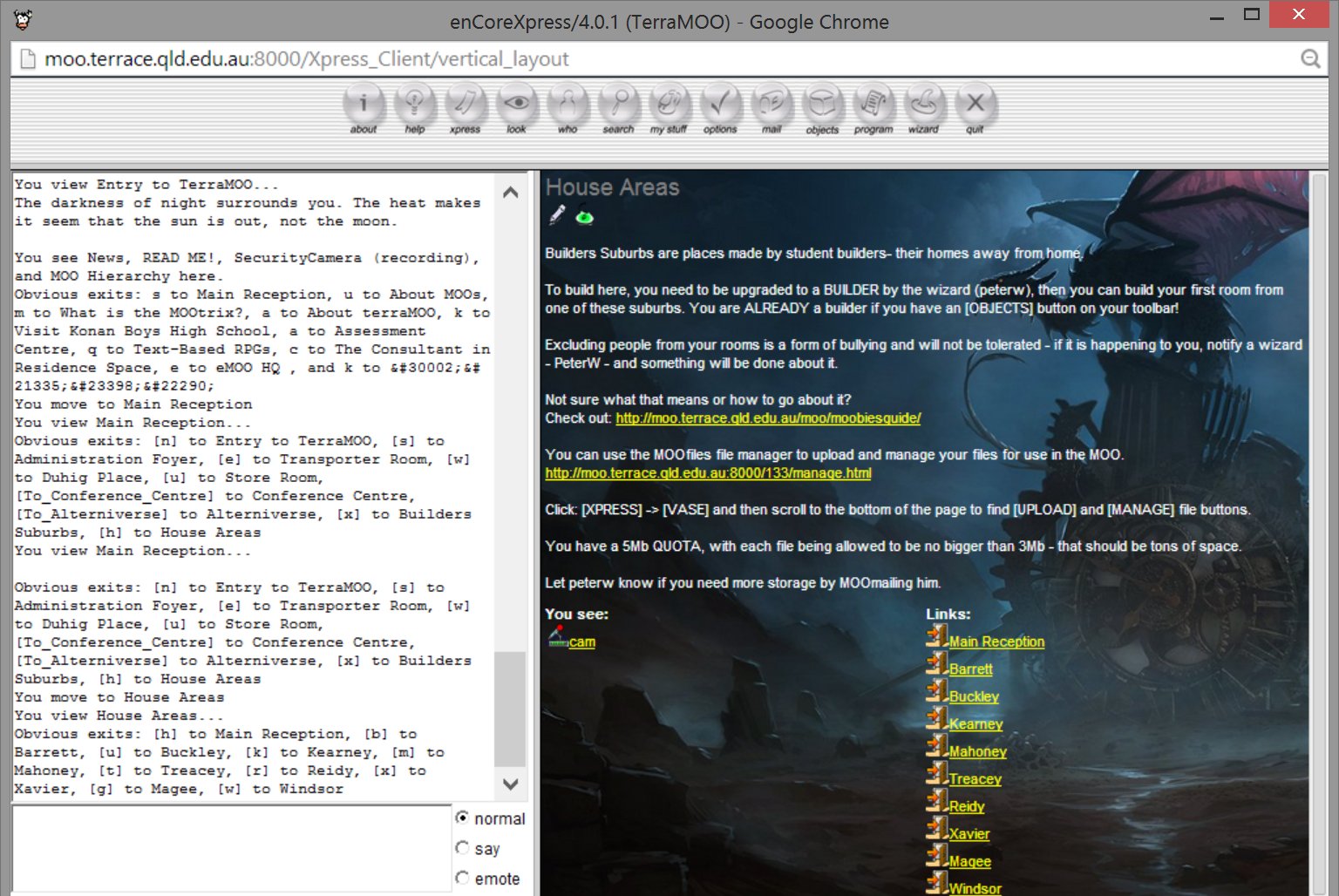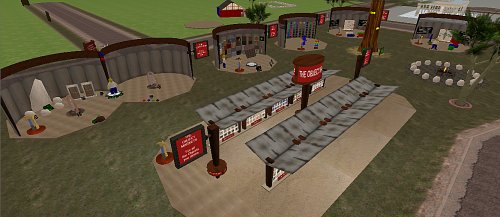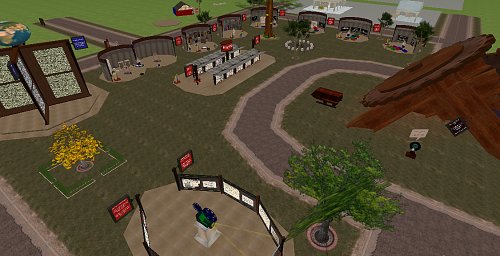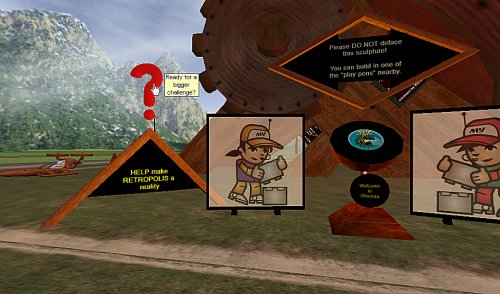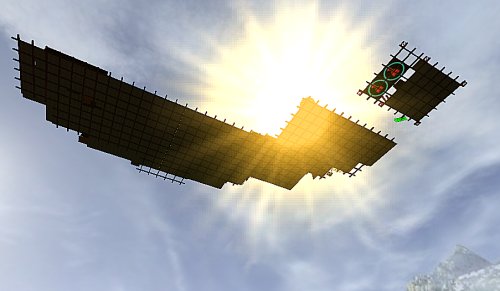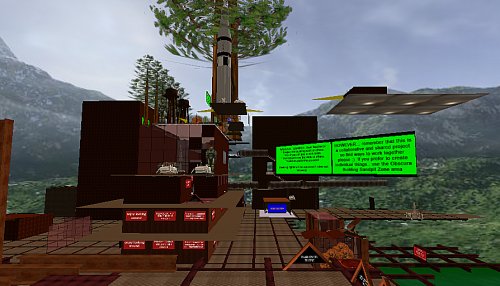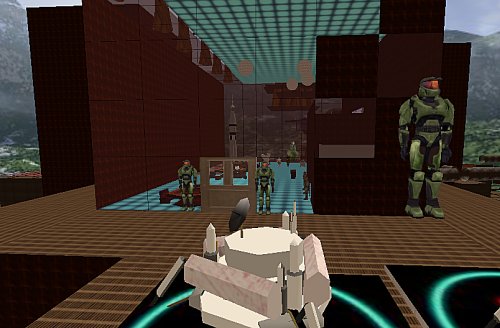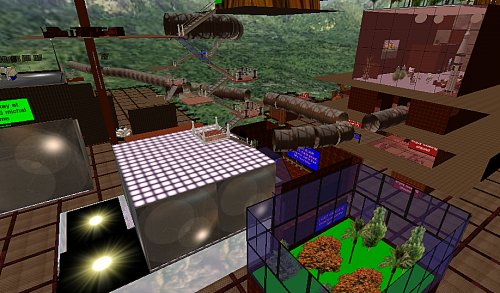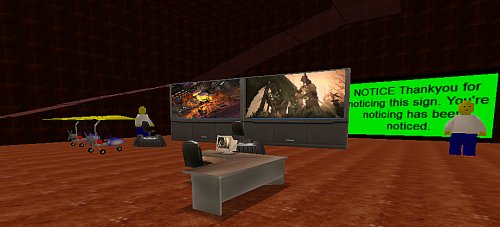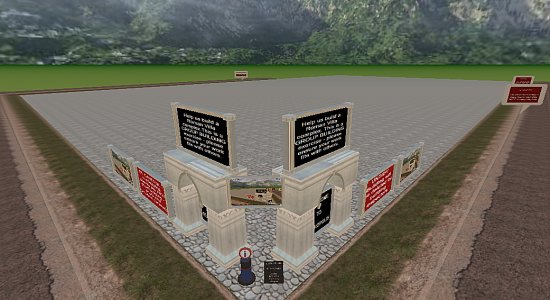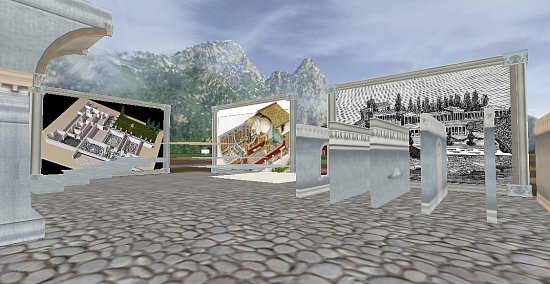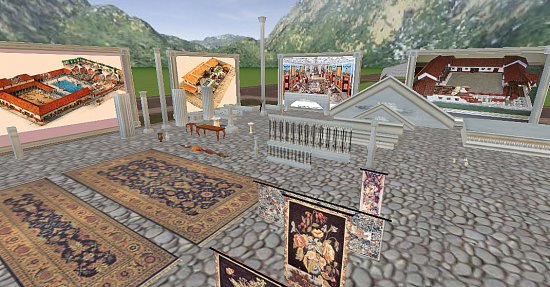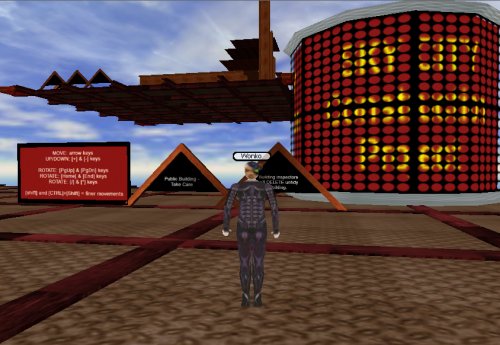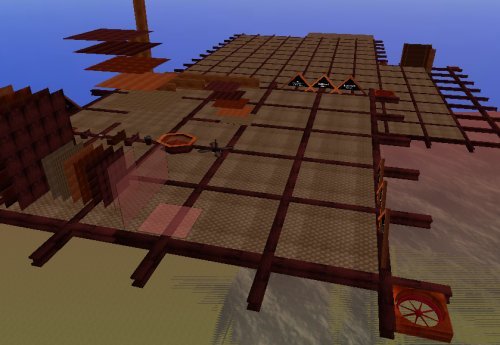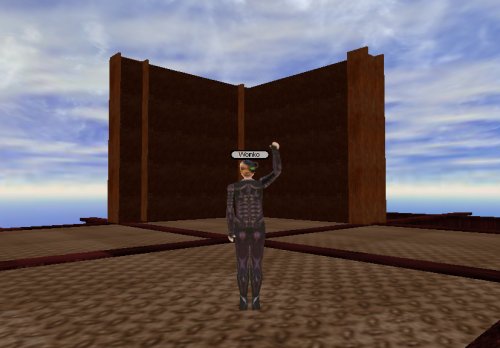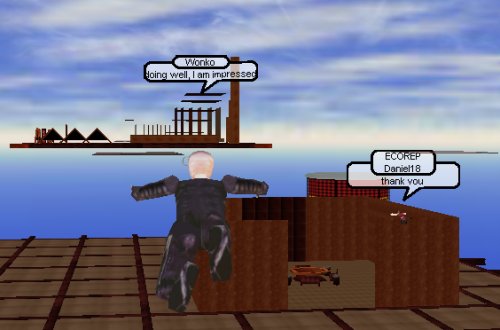Hello Old Friend
After discussion, it was decided to host the first term of our Year 8 Digital Technologies in our MOO (Multi-user Object Oriented learning environment).
There are so many aspects of “digital citizenship” that see so completely and natively at home in a virtual world that the opportunity seemed too good to pass up.
Our MOO has been running, uninterrupted since September 9, 2001, with students first making their way on 14th of that month – a calm safe place to learn just when the world changed so fundamentally.
MOO architecture is based around “room” objects, connected via “exit” objects, embellished with smart objects. Traditionally, using simple menu-based interfaces, kids make.
Knowing a lot about the language underneath, making areas is much faster if it is scripted.
With some simple scripting build commands, a whole new suburb is born, ready for kids to build from
So nice to see stuff happen so fast, will be interesting to see how our 8’s cope with a constructivist, constructionist mentality. Lots still to plan, should be fun.
Tutorial Zone complete?
…so I got to thinking about the overall “sense” of the tutorial zone – never a good thing when I have lots of other things to do, but the new procrastination plugin kicked in and I ignored my streaming head cold symptoms and began tweaking…
It seemed to me that the tutorial “shells” were facing the wrong way (they faced the road and had their backs on the internal lawn area) – by rotating them 180 (and re-arranging the foliage) it feels a lot more inclusive, like the tutes and the object market relate to each other – they are ALL about the art of building so that was settled (at least in my own fevered brain).
I added a campfire talk circle, with a “cone of silence” around it so private group discussions can go on there, re-jigged the guided tour a little so it made sense and I think I am pretty well done here.
Looking at it from above, it looks like there is very little here, but I know how long it has taken me to make, and feel pretty proud of it.
In the one compact u-shaped area we learn how to make, move, rotate, scale, colour, texture, script and select objects, how to film them afterwards and share our plans for doing so – nice, compact, accessible and … yeah, I know, talking to myself, you get that.
What is missing? Suggestions gratefully received.
SkyCity Revisited…
…I like it when a little organised anarchy works, Sky City is a prime example:
I noticed kids building with lego at altitude, and decided to appropriate the idea, and give them a little structure. I created an “underground” link, phrased in the “mouseover challenge” of wanting to get into something bigger. Rather than splashy and overt, I made the link a little buried, so the kids felt like they had discovered something that not everyone knew about.
Following the link, it warps you up to a platform 400m in the sky, barely visible from the ground (depending on your visibility settings, you get a small blot in the sky until you approach it then this amazing expanse materializes before you)
You land in my “object dock’, a good place to explore materials and check the rules. From this object dock you then look out over a suspended plane (I expand it at night, late, when space is an issue):
…the ONLY guidelines – do not break/obscure anyone elses building – work together. We had to add the rules, it was a little ugly before we did, kids scrapping and getting territorial – you get that.
The results have been, well, honestly, startling.
Some kids have been up here for hours, mostly in their own time (evenings and weekends) sculpting buildings, “homes” and play spaces, often tearing down and starting over when they realise that “tidy” building looks better, that inside spaces need to make sense else getting around them is difficult – don’t architects spend years at uni completely failing to learn this lesson?
Some kids use only the provided materials, MOST source new things, incorporate them, re-cycle and re-purpose, displaying imagination and creativity I as a crusty old adult can only pretend to remember having.
I am honestly impressed with the skill and attention to detail some kids have displayed here. Object alignment, scaling, positioning etc are, for the most part, very sophisticated…
…they worked together, often without any direction or intervention, building things beside and with others – they devised streets, a transport tube system and other modern metropolis entrapments.
For keen (or “difficult”) kids, I changed one or more of thier stationary vehicles into movers that THEY could control – we have hand gliders, thopters and other flying things that kids have build garages for and loan out for joy flights – amazing really. What interested me more was the almost casual (but strategic) suggestions that took TROLLS and turned them into contributing citizens.
Some buildings work really well as buildings – they have internals that are breathtaking, and ramps, stairs, lifts and so on. As adults we look to make sense of our surroundings – kids are not confined by such a narrow view – all pretty amazing stuff, and more importantly a terrific way for them to practice their building skills (which, sssshhh – don’t tell them, is actually why this exists).
Who says chaos and anarchy can not be positive forces…
Lego for big kids…
…so our punters are over Lego, in a big way, and are ready for challenges that are more real. I guess I over estimated the connection they wold feel with Lego – how quickly we forget the ages that toys are appropriate to kids.
Cybernauts will eventually be building things to solve problems, in the interim they need a challenge that exercises their builders skills, so I thought of a group building challenge – Retropolis, an ancient Roman Villa complex/compound.
I cleared the Lego pile (sorry kids, it was bugging me), extended the bay a little, lay down some cobbles, erected signs issuing the challenge – “Build us small a Roman town”, together. I recorded a video (you can see it playing on 3 screens as part of the welcome facade) explaining what was necessary, pointing out what was where and what they had to do. I think it makes sense – what do you think?
I then set about assembling a collection of Roman ruin bits and pieces – scaled so they fit together nicely, accessories and so on, and lay out an object yard – this saves them time searching for period-correct things.
It occurred to me that I was assuming they had some idea of what a Roman Villa complex might look like, and i have found assumptions to be problematic at best, so decided to provide some inspiration – thank you Google I found plenty of villa-inspired plans and diagrams, of which I constructed billboards to display them.
It will be interesting to see how it develops – scale and scope are something primary kids seem to struggle with – they go large before thinking about practicalities or human-scale. They think large will impress when actually detail and control are more admirable. They see super structure and do not think through the practicailties of gravity, weather, basic physics, terrain etc – this is both wonderful and an issue when trying to construct something that looks convincing.
…the challenge is issued, with the proviso that untidy/un-Roman building will be demolished. How will they go? I honestly have no idea, but see nothing but potential (particularly in the light of the success of SkyCity). We shall see…
Up Up and Away … to Sky City
Now this idea occurred to me after a cybernaut (thanks Mitchell) sheepishly took me to a place where he thought other cybernauts had done something naughty – let me explain.
When you clone an object from one that already exists (the first step in Activeworld building), you get to choose the n-s, w-e and the up-down-ness of the newly created clone. Someone had discovered that on the construction planet (Obscura) you could change the up-nicity of an object to 500m or so (waaaay above viewing distance which is typically maxed out at 200m). What makes this neat is they then FLEW up and made a lego raft at that altitude. Far from being naughty, I thought it was brilliant, and an idea well worth expanding.
It got me thinking, that maybe our budding builders need a more realistic challenge (or maybe lego is sooo yesterday man), so came upon an idea for a building challenge.
So I rigged a rusting girder platform, on some “suspensors” some 4oom above our pyramid zone (the lego building zone for noobies), lay down modular flooring, signage and some simple rules and regs, then assembled a collection of components (the lego pieces – shhhh, don’t tell them it is the same thing) they could use to make buildings in a custom “object dock” flying a little above the platform and I think I am on to a good idea.
By giving then carefully chosen objects that fit together seamlessly, and some simple construction instructions, punters clone and place their creations on the expanding platform. They are high enough to have conversation and not flood the ground with it, but the space is sufficiently detached from the main building academy (at least vertically) to be private enough for them to think they are being independent.
I chose modular scenery, walls etc that were humanoid scale – so when the build rooms and corridors they feel right. I may offer specialist building workshops at altitude – we shall have to wait to gauge the interest but it is certain that we have some interested little people with time on their hands that they are willing to spend in-world, so why not harness some of that creativity.
I also learned something about saved object groups that will be very useful. Once I had made the object bay, complete, I saved that to my hard drive (complete) so I can clone them wherever I want – they maintain their altitude information so I can be on the ground and make one appear some 400m above me almost instantly – pretty neat I think.
Is this going to result in great architecture? I do not know – it will be interesting to find out however. What do you think are the pluses and minuses of this approach – should there be city by-laws, construction codes or is that just complicating things way to much?
POSTSCRIPT:
Some kids just needed encouragement – they are doing wonderful stuff when given a little advice and some personal freedom, I can only be impressed

